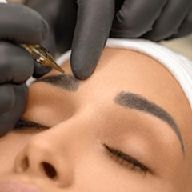Search results
Welcome to The Skindex - the largest collection of community generated Minecraft skins. Download, upload and share your creations with the rest!
- Editor
Make your own Minecraft skins from scratch or edit existing...
- The Skindex
Welcome to The Skindex - the largest collection of community...
- Girl
View, comment, download and edit girl Minecraft skins.
- Dream
View, comment, download and edit dream Minecraft skins.
- Recently Commented
View, comment, download and edit recently commented...
- One Piece
View, comment, download and edit one piece Minecraft skins.
- ANAGRAM QUIZ: Who are these Hermits?
- HermitcraftFanCIub
- Mushroom
- SunnyxMeadows
- LOCALNEWS | I'M BACK! | BREAKING NEWS
- LocalNews
- They're just who the spider will eat//DESC
- Silly0fTheGoose
- The MANDELA Files :: signups
- TheAlternativeTacos
- 1k series || wxnterinq fs
- Galactic Gamer
- Rolexriot20
- Glacyre Pink Hoodie
- Glacyre
- Nibbles Disguised as Server Gaming
- Nibbles9001
- Euphoria Luna
- EuphoriaLuna
- Editor
- Overview
- Anatomy
- Conditions and Disorders
- Care
- Additional Common Questions
As the body’s largest organ, skin protects against germs, regulates body temperature and enables touch (tactile) sensations. The skin’s main layers include the epidermis, dermis and hypodermis and is prone to many problems, including skin cancer, acne, wrinkles and rashes.
Contents
Arrow Down
OverviewAnatomyConditions and DisordersCareAdditional Common Questions
Contents
Arrow Down
What are the layers of the skin?
Three layers of tissue make up the skin: Epidermis, the top layer. Dermis, the middle layer. Hypodermis, the bottom or fatty layer.
What does the epidermis (top layer of skin) do?
Your epidermis is the top layer of the skin that you can see and touch. Keratin, a protein inside skin cells, makes up the skin cells and, along with other proteins, sticks together to form this layer. The epidermis: Acts as a protective barrier: The epidermis keeps bacteria and germs from entering your body and bloodstream and causing infections. It also protects against rain, sun and other elements. Makes new skin: The epidermis continually makes new skin cells. These new cells replace the approximately 40,000 old skin cells that your body sheds every day. You have new skin every 30 days. Protects your body: Langerhans cells in the epidermis are part of the body’s immune system. They help fight off germs and infections. Provides skin color: The epidermis contains melanin, the pigment that gives skin its color. The amount of melanin you have determines the color of your skin, hair and eyes. People who make more melanin have darker skin and may tan more quickly. Advertisement
What does the dermis (middle layer of skin) do?
The dermis makes up 90% of skin’s thickness. This middle layer of skin: Has collagen and elastin: Collagen is a protein that makes skin cells strong and resilient. Another protein found in the dermis, elastin, keeps skin flexible. It also helps stretched skin regain its shape. Grows hair: The roots of hair follicles attach to the dermis. Keeps you in touch: Nerves in the dermis tell you when something is too hot to touch, itchy or super soft. These nerve receptors also help you feel pain. Makes oil: Oil glands in the dermis help keep the skin soft and smooth. Oil also prevents your skin from absorbing too much water when you swim or get caught in a rainstorm. Produces sweat: Sweat glands in the dermis release sweat through skin pores. Sweat helps regulate your body temperature. Supplies blood: Blood vessels in the dermis provide nutrients to the epidermis, keeping the skin layers healthy.
What conditions and disorders affect the skin?
As the body’s external protection system, your skin is at risk for various problems. These include: Allergies like contact dermatitis and poison ivy rashes. Blisters. Bug bites, such as spider bites, tick bites and mosquito bites. Skin cancer, including melanoma. Skin infections like cellulitis. Skin rashes and dry skin. Skin disorders like acne, eczema, psoriasis and vitiligo. Skin lesions, such as moles, freckles and skin tags. Wounds, burns (including sunburns) and scars.
How can I protect my skin?
You lose collagen and elastin as you age. This causes the skin’s middle layer (dermis) to get thinner. As a result, the skin may sag and develop wrinkles. While you can’t stop the aging process, these actions can help maintain healthier skin: Apply sunscreen every day (even if you’re mostly indoors). Choose a sunscreen with a broad-spectrum sun protection factor (SPF) of at least 30. Don’t tan indoors or outdoors. Tanning causes skin damage. It ages skin and can cause skin cancer. Find healthy ways to manage stress. Stress can make certain skin conditions worse. Perform regular skin and mole checks to look for changes that may be signs of skin cancer. Quit smoking and using tobacco products. Nicotine and other chemicals in cigarettes and electronic cigarettes age skin faster. Use gentle cleansers to wash your face in the morning and at night. Shower regularly and apply moisturizing lotion to prevent dry skin.
When should I talk to a doctor?
You should call your healthcare provider if you experience: Change in size, color, shape or symmetry of a mole. Skin changes like a new mole. A cut that a household bandage can’t close (that may need stitches). Severe, blistering burns. Signs of skin infections like red streaks or yellow discharge. Unexplained skin rash or skin condition. A note from Cleveland Clinic As the body’s largest organ, your skin plays a vital role in protecting your body from germs and the elements. It keeps your body at a comfortable temperature, and nerves beneath the skin provide the sense of touch. This external body covering can have serious problems like skin cancer, as well as more common issues like acne and skin rashes. Your healthcare provider can offer tips to help keep skin healthy. Medically Reviewed Last reviewed by a Cleveland Clinic medical professional on 10/13/2021. Learn more about our editorial process.
The human skin is the outer covering of the body and is the largest organ of the integumentary system. The skin has up to seven layers of ectodermal tissue guarding muscles, bones, ligaments and internal organs. Human skin is similar to most of the other mammals' skin, and it is very similar to pig skin.
Skin. Facts about the skin. The skin is the body's largest organ. It covers the entire body. It serves as a protective shield against heat, light, injury, and infection. The skin also: Regulates body temperature. Stores water and fat. Is a sensory organ. Prevents water loss. Prevents entry of bacteria.
Jan 25, 2024 · Skin: How it works. Layers. Functions. Color. Disease. Aging skin. Summary. The skin is the body’s largest and heaviest organ. It is made up of several different types of cells and its main...
People also ask
What is human skin?
Why is skin important?
What is the function of skin?
Why is the skin the largest organ of the body?
Skin is the layer of usually soft, flexible outer tissue covering the body of a vertebrate animal, with three main functions: protection, regulation, and sensation. Other animal coverings, such as the arthropod exoskeleton, have different developmental origin, structure and chemical composition.
Apr 9, 2024 · Human skin, in human anatomy, the covering, or integument, of the body’s surface that both provides protection and receives sensory stimuli from the external environment. The skin consists of three layers of tissue: the epidermis, an outermost layer that contains the primary protective structure,










